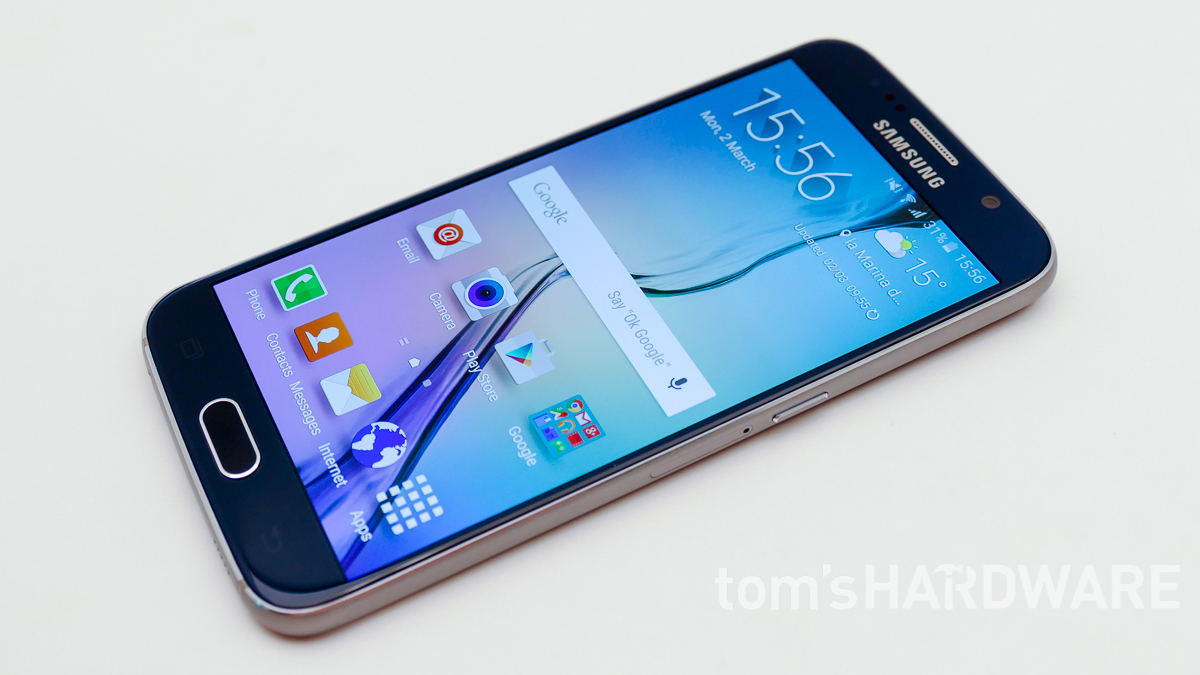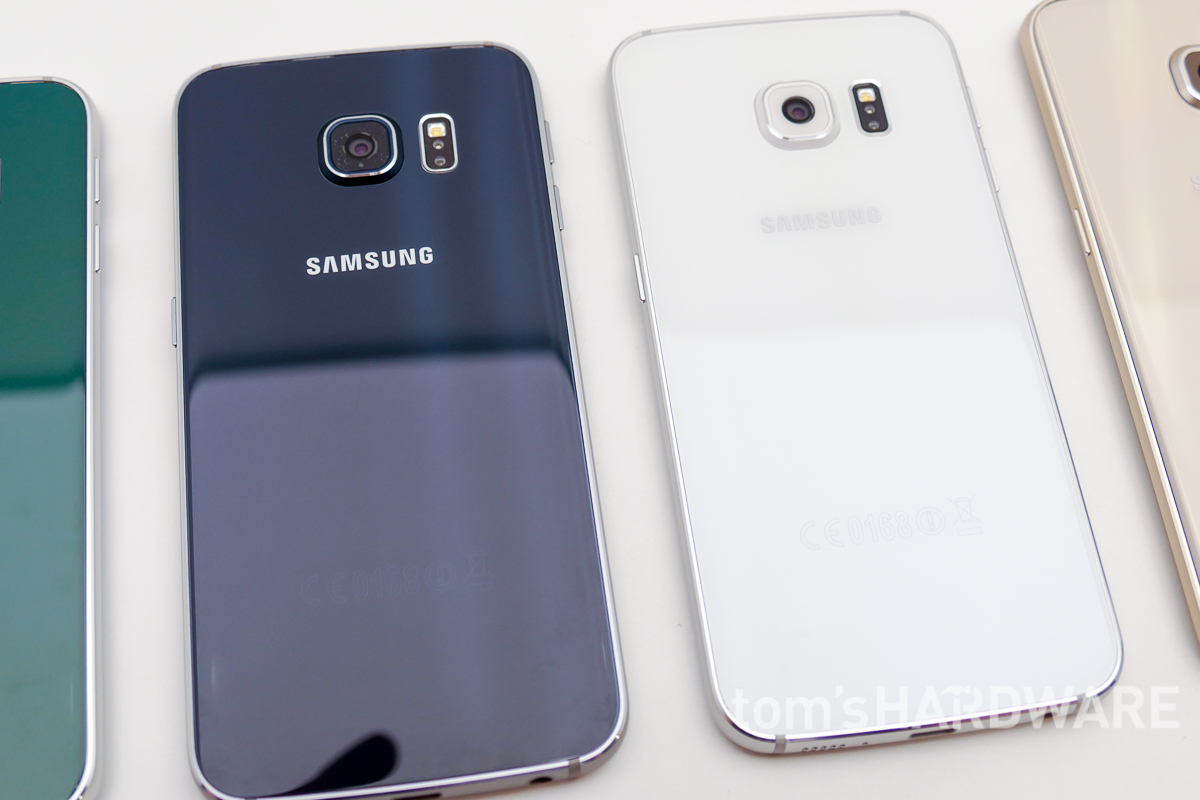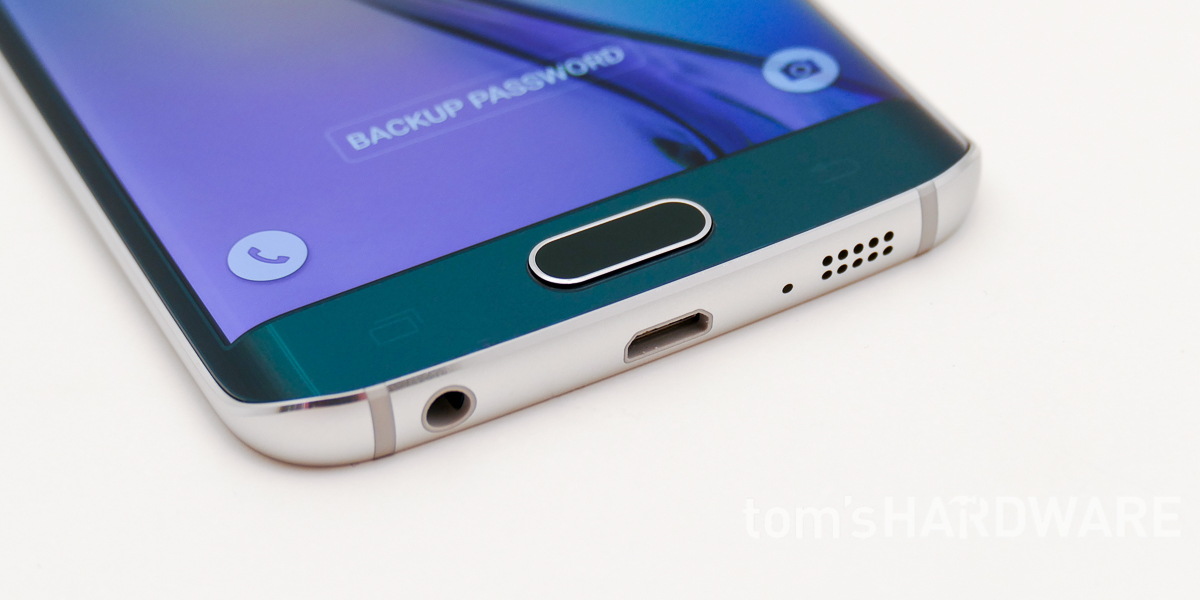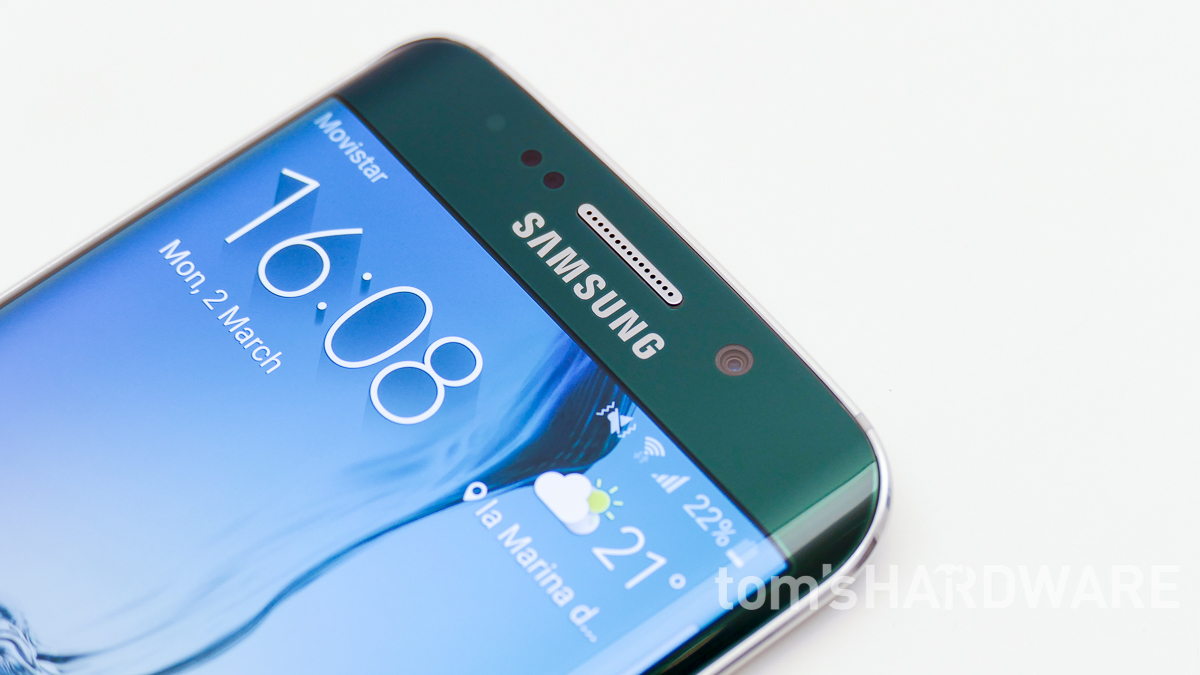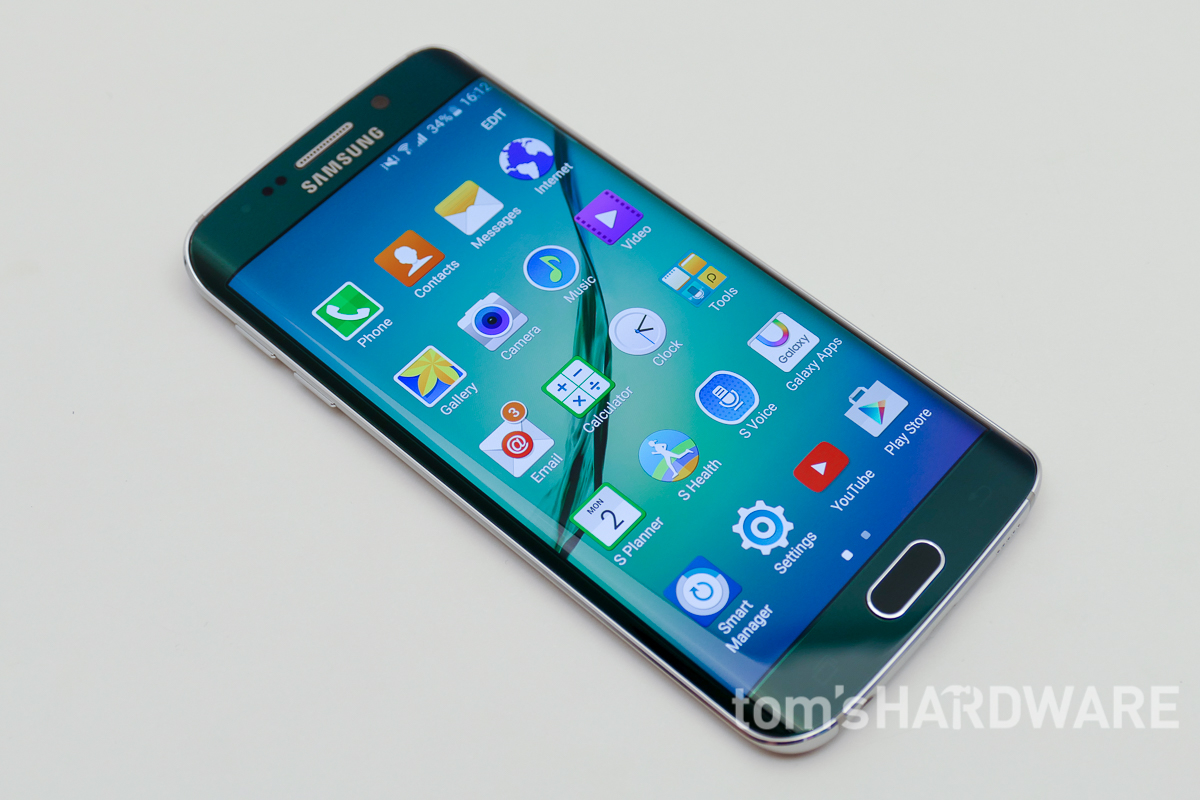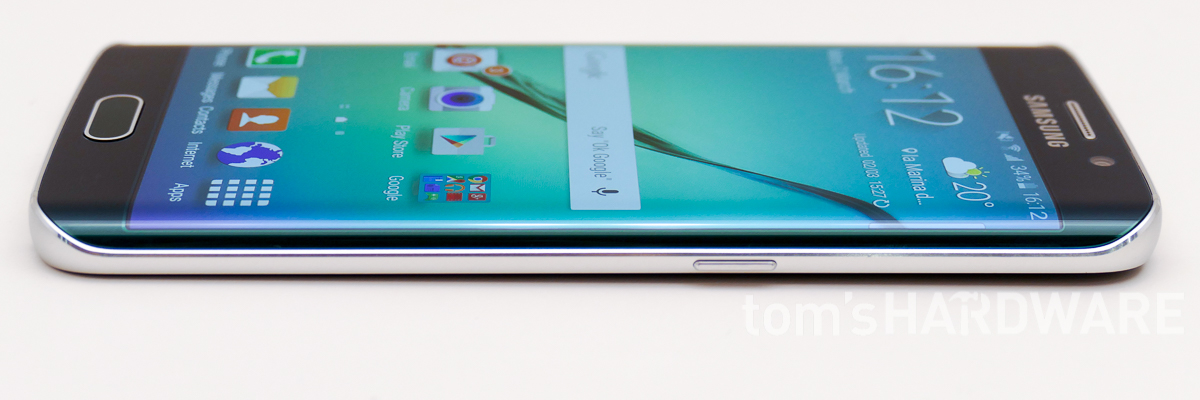Samsung Galaxy S6 And S6 Edge Review
The controversial new Samsung Galaxy S6 sheds its plastic construction, removable battery, expandable storage and environmental protection for slicker looks.
Why you can trust Tom's Hardware
Conclusion
Since the release of the Galaxy S5, Samsung has been restyling itself to better compete in the current market. We’ve seen its new design-focused philosophy coalesce with each new product launch, culminating in the Galaxy S6 and S6 edge. The new Galaxy phones’ aluminum and glass construction and aesthetic detail are a radical departure from the S5.
The glossy exterior—along with the edge’s curved screen—may draw the most hype, but it’s what is inside that peaks our interest. The Exynos 7420 is the first mobile SoC built on a 14nm FinFET process, allowing the Mali-T760MP8 GPU and four A57 CPU cores to reach higher clock speeds for longer periods of time, or to consume less power when using the four A53 CPU cores for less intense workloads, relative to the last generation 20nm planar processes. Feeding the SoC with data is 3GB of LPDDR4 memory, which operates at higher frequencies and uses less power than last year’s LPDDR3 RAM. The Galaxy S6 is also the first device to use Samsung’s latest UFS 2.0 based NAND, whose ability to perform full-duplex data transfers and use of SCSI command protocols help apps launch faster and files save quicker.
Thanks to these new technologies, the S6 delivers excellent performance. It proves superior in nearly every CPU and system test, clearly outpacing the HTC One (M9), one of its primary competitors. Apps also open much more quickly—sometimes by as many as several seconds—on the S6 relative to other current generation phones. Gaming performance is also strong, topping the iPhone 6 in raw throughput primarily due to its Mali GPU’s higher clock speed. Comparisons to Qualcomm’s Adreno GPUs are more difficult since each architecture excels in different areas, with the Note 4 and M9 performing better in synthetic tests and the S6 scoring higher in actual game tests.
Samsung also includes several new or enhanced features for this generation. Coiled beneath the rear cover glass is the integrated wireless charging, supporting two of the three standards: WPC (Qi) and PMA. The S6 also gets serious about fingerprint authentication, swapping the cumbersome swipe-style sensor used in the S5 for a capacitive touch-based sensor, which is much more convenient to use and nearly as accurate as the iPhone’s Touch ID. This feature pairs nicely with Samsung Pay, a mobile payment system similar to Apple Pay, but capable of working with not just NFC enabled terminals but also traditional magnetic stripe credit card terminals.
The S6’s SAMOLED display is also much better than the Galaxy S5’s. It moves from a 1080p resolution to 1440p, increasing pixel density by 33%. While screen brightness remains on par with the S5 and Note 4, the improvements in grayscale and color accuracy make the S6’s display (in the Basic screen mode) the best looking we’ve ever seen. The curved screen in the S6 edge is also very good, but cannot match its flat-screened counterpart’s performance.
The S6’s overall imaging experience sees vast improvements as well. For starters, opening the S6’s Camera app is both easier (double-clicking the home button from anywhere) and faster (around one second). Once inside the app, there’s some new shooting modes and a refined Pro mode for making easier manual adjustments to camera parameters.
More importantly, the S6 takes great photos. The front-facing camera uses its new sensor’s larger pixels and higher resolution to capture detailed images with accurate color and minimal noise. The rear camera includes phase detection AF for faster, more accurate focusing; a new infrared color sensor for better white balance; OIS to reduce camera shake; and a faster lens which allows more light to reach the sensor—either the Samsung ISOCELL sensor from the S5 or the Sony sensor from the Note 4. In our comparative testing, the S6 with the Sony sensor produced stunning results, placing it ahead of the already impressive Note 4 and iPhone 6 in every lighting scenario it faced. Using the Samsung sensor, the S6 struggles with setting the correct white balance in less than perfect lighting and suffers from overly aggressive noise reduction algorithms. Unfortunately, there does not seem to be a way to know ahead of time which sensor an S6 will come with.
Get Tom's Hardware's best news and in-depth reviews, straight to your inbox.
The rear camera lottery is not the Galaxy S6’s only transgression. The lack of a removable battery and microSD support, prominent features of past Galaxy phones, are certainly the most obvious and serious, but there are other minor issues too. While battery life is on par with the S5 at idle or when running light to moderate workloads, the S6’s higher performing SoC drains its smaller battery faster—around 10% to 20%—with more intense operations. The external speaker is weaker than the iPhone 6’s, and you need to fiddle with the equalizer to get good sound from the headphone jack. Also, the S6 edge’s thin sides and buttons make it feel a bit sharp when using it and difficult to pickup when laying on a table.
These relatively minor issues cannot eclipse the innovative hardware and useful features in the latest Galaxy phones, provided you can live without a removable battery and microSD support. Samsung’s stylish new flagships are the trailblazers for this generation—the benchmarks for performance and features. For this reason, the Galaxy S6 and Galaxy S6 edge are Editor Recommended.
MORE: All Smartphone Content
Matt Humrick is a Staff Editor at Tom's Hardware, covering Smartphones and Tablets. Follow him on Twitter.
Alex Davies is an Associate Contributing Writer for Tom's Hardware, covering Smartphones and Tablets.
Follow Tom's Hardware on Twitter, Facebook and Google+.
-
LordConrad Considering that Samsung's AMOLED screens have 30% fewer subpixels than other screen types, the 33% pixel increase in the S6 should make it roughly equal to the 1080p screens from other manufacturers.Reply
I'm tired of Samsung trying to claim a higher pixel count when they don't even use the same pixel structure as everyone else. -
blackmagnum If Samsung doesn't release the latest Galaxy product, what benchmark would Apple compare its new iPhone with then? ...can't be LG, Motorola or HTC.Reply -
zodiacfml Battery testing and results doesn't seem to give useful information. There should be a test for Wi-Fi and LTE testing just to keep it close real world usage.Reply
Unfortunately for 3D gaming, the S6 should remain plugged in. This reminds me of the also slim Nexus 5 with good performance in all corners but kills the battery too fast for use as portable gaming device. I guess that's where affordable external battery banks come in. -
Reaver192 I cannot figure out which camera is in my phone???? I did a search or the file“/sys/devices/virtual/camera/rear/rear_camtype” and got no results in the file manager app I downloaded. I have a verizon s6(non-edge) I don't know why I even care but I really want to know for some reason which sensor is in my phone????? Any advice/ : )Reply -
darkchazz ReplyConsidering that Samsung's AMOLED screens have 30% fewer subpixels than other screen types, the 33% pixel increase in the S6 should make it roughly equal to the 1080p screens from other manufacturers.
Exactly!
I'm tired of Samsung trying to claim a higher pixel count when they don't even use the same pixel structure as everyone else.
This reminds me of the nexus 6.
moto/google market its display as an incredibly sharp 1440p AMOLED panel, when in reality its total number of pixels is less than that of the nexus 5's 1080p LCD. -
alex davies ReplyI cannot figure out which camera is in my phone???? I did a search or the file“/sys/devices/virtual/camera/rear/rear_camtype” and got no results in the file manager app I downloaded. I have a verizon s6(non-edge) I don't know why I even care but I really want to know for some reason which sensor is in my phone????? Any advice/ : )
I just tried an alternate method on the Canadian S6 I have. Dial *#34971539# and in the menu that comes up hit the 'ISP VER CHECK' option and pop-up should come up with the sensor info. I am not sure if this works for the Verizon S6. -
MobileEditor <quote>I cannot figure out which camera is in my phone???? I did a search or the file“/sys/devices/virtual/camera/rear/rear_camtype” and got no results in the file manager app I downloaded.</quote>Reply
You can try the method Alex pointed out if you are still using the 5.0.2 firmware. This has been removed in the 5.1.1 update (at least for T-Mo). Some file manager apps may not let you see the root filesystem. You can try ES File Explorer as an alternative.
- Matt Humrick, Mobile Editor, Tom's Hardware -
MobileEditor ReplyI just got a Verizon Galaxy S6 a few days ago. So far the battery life has been so poor that I'm considering switching to something else. From what I've been reading, it appears that the S6 has issues with how much power it is trying to drive to the wireless connections at a given time, causing excess battery drain even with the screen off.
Matt, did you experience any unusual battery behavior during your testing?
I did not experience excessive power drain related to wireless activity, but I'm on a different network (T-Mo), in a different area, with a different usage pattern, and even a different baseband. So my experience won't mean much for you.
I did read an article (forget where) showing that the Samsung RF components used more power than the Qualcomm equivalents. Since the Verizon model uses the Qualcomm components, I'm surprised you're seeing excessive power use. Did you switch carriers when you got the S6?
This could be a software configuration issue. How many different apps do you have that get/receive info from the Internet? How aggressively are they fetching data? Setting email, facebook, twitter, etc. to fetch data every 30s, for example, would keep your radios powered up and drain the battery more quickly. Look at the following:
1) Settings->Data usage to see which apps are consuming the most data
2) Settings->Battery->Battery Usage to see what's using the most power
3) Settings->Battery->Detail to manage which apps are running and to check the "Abnormal Battery Usage" tab.
You might try disabling messaging/social media apps or at least dialing back the fetch policy to at least 30mins for each as a test.
- Matt Humrick, Mobile Editor, Tom's Hardware -
cknobman TouchWiz still a memory hogging piece of trash.Reply
And Samsung wonders why they keep losing market share, idiots. -
Vlad Rose Dumbest move they did was remove the microSD card expansion. At least their Note has it still. Once they remove it from the Note line as well, it will be the last Samsung I own. It was the biggest reason why I chose them over getting the same thing as my wife's iPhone. I gave up FaceTime so that I could have music for work (and use skype instead).Reply
